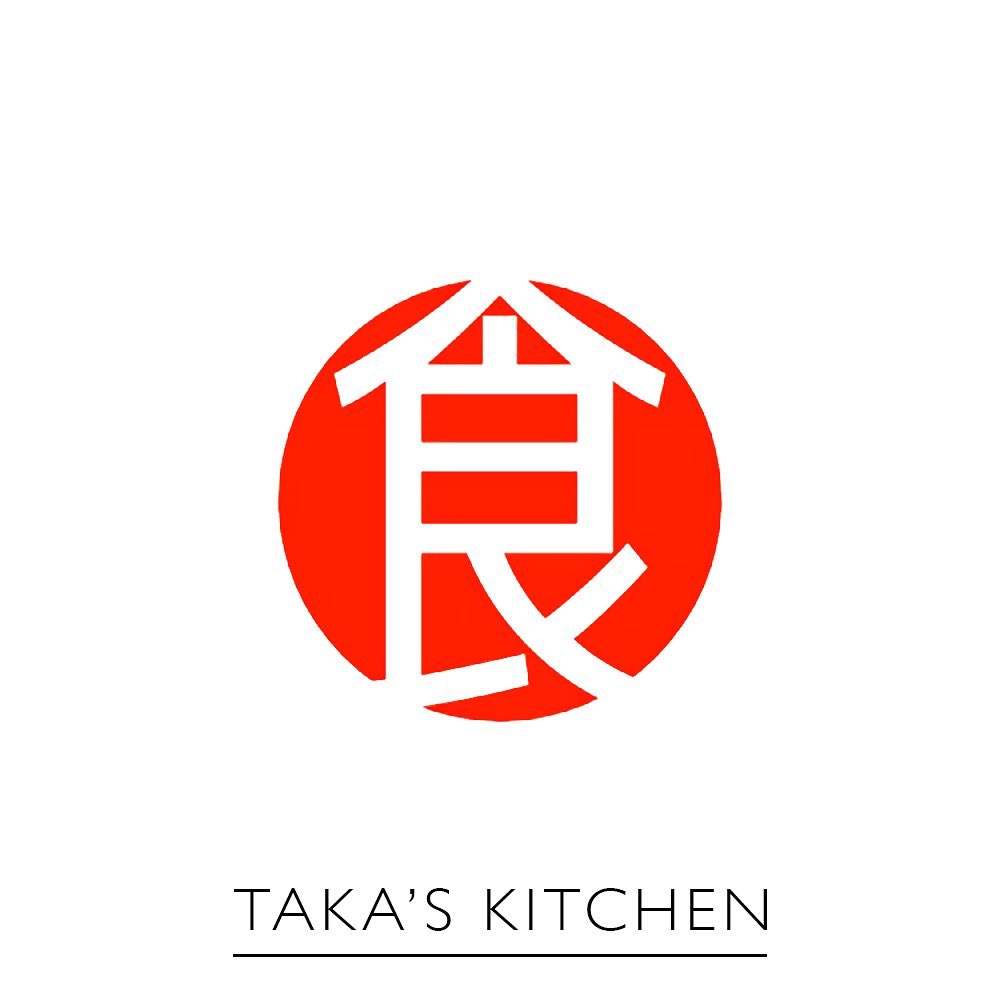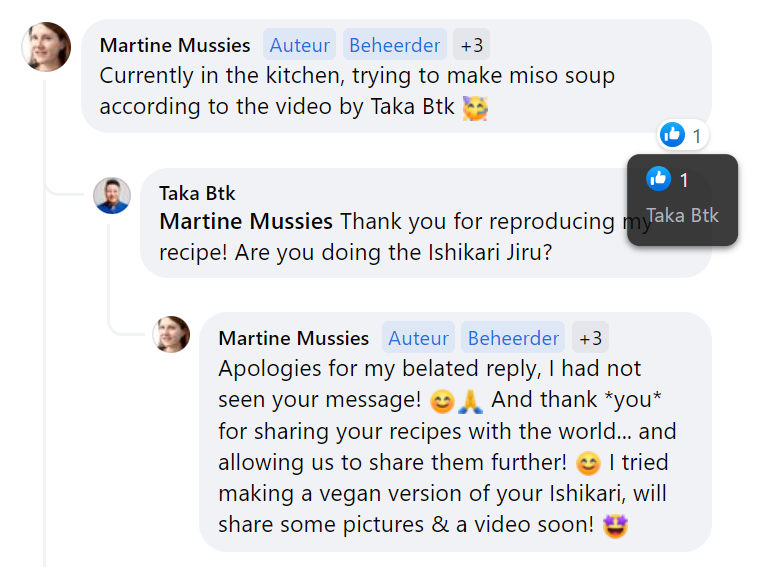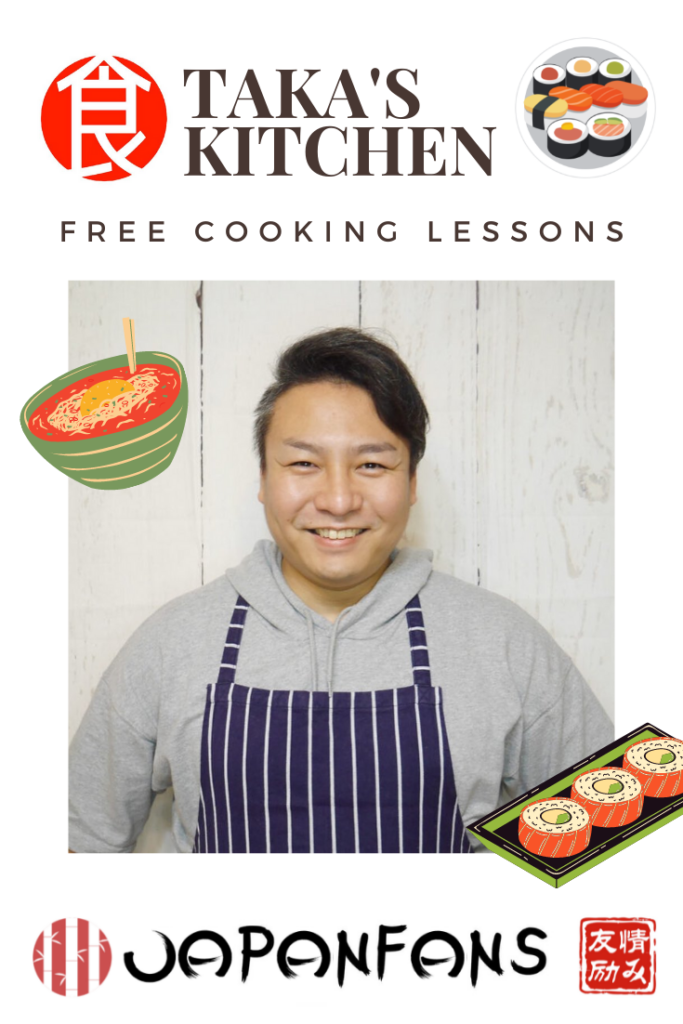In response to your enthusiasm for all the tasty recipes inspired by Japan, we went in search of instructions for preparing some more traditional Japanese dishes… and we found free cooking lessons by Taka – from “Regional Food Japan”.
In our Facebook group, people often mentioned YouTube chef Taka, so in this blog, you will find our top 10 of Taka’s unique and delicious regional dishes from all over Japan! Enjoy – and don’t forget to share the pictures of your cooking results with us! ^_^
Taka’s YouTube page is packed with free cooking lessons, with fish, with meat, but also vegetarian and vegan (remember Shojin Ryori? 😉 ). Taka sensei called his channel “Regional Food Japan” and this title says it all! “Japan has as many as 47 prefectures and each prefecture boasts its own local dishes developed through history and tradition”, Taka explains, “I hope you have an exciting journey through the world of Japanese cuisine in my channel”. So, what are you waiting for… as Taka says: “JAPANIZE YOUR KITCHEN!”
All the content below is made by Taka.
Free cooking lessons by Taka – from “Regional Food Japan”


About Taka – from “Regional Food Japan”
“My name is Taka. I’m a cooking instructor, YouTube chef and recipe writer. I previously learnt at a culinary school and worked in some commercial kitchens. Now, I help people learn how to cook the real Japanese food. But why did I start doing all these? Well, let me tell you a story:
l used to lived in Australia and Europe for quite a while, and during these times, I learnt that so many people were actually interested in Japanese cooking but didn’t know where to begin or were getting wrong ideas about it because of misleading recipes, dodgy TV chefs and bad Japanese restaurants. When I joined a major Japanese food group on a social network site a few years ago, I still found the situation that was no different than the one I had experienced abroad. Coming across such, I felt sad about how Japanese culinary culture was mistaken or ignored.
One day, I though I could be one of the people to do something about it, making use of my own passion towards and knowledge about cooking. Then I started telling people, through the social media and cooking lessons, about what’s actually eaten in Japan and what regional food varieties are there. Luckily, a lot of them found it interesting and informative, and I started to have people reproducing my recipes! The fact that they were actually learning authentic Japanese cooking and feeling happy about it made me feel happy as well and gave me confidence to go on with this food journey of mine.
I hope that what I’m doing is also interesting and informative for you and you will also have fun experiencing the real Japanese food!”
Silky Hokkaido Potato Cakes “Imo-Mochi”
The origin of Imo-Mochi dates back to late 1800’s, when exploration of Hokkaido island started in earnest. Unfortunaley, at that time, rice was barely cultivated on the island and Mochi, rice cake, could not be made. Therefore they used potatoes, which were abundant on the island, to make an alternative. Imo-Mochi was an important source of protein and carbohydrate for the pioneers to survive the severe climate and heavy physical labour. Today it has become one of the snack icons of Hokkaido and is enjoyed by many locals and tourists.
-INGREDIENTS-(Serves 4) 900g potatoes, washed and peeled 135g Katakuriko (potato starch) 1 tsp salt 3 tbsp tinned corn 2 slices bacon 4 knobs Gouda cheese Freshly ground black pepper 4 tbsp vegetable oil -Soy Glaze- 100g sugar 50ml soy sauce 50ml Mirin 100ml water 3 tbsp Katakuriko 6 tbsp water.
Bitter Melon to Die For
When talking about Okinawa cuisine, we should’t forget about Goya, bitter melon. And the most popular of all dishes with Goya is definitely Goya-Champuru, stir-fried bitter melon—Champuru means “a jumble” in the Okinawan dialect. The dish is such a perfect representation of Okinawa culture, which consists of Japanese, Ryukyu (old Okinawa), China and the US. Dashi was brought from Japan, Goya from Okinawa, tofu from China and spam from the US. It’s simple to prepare but profound to talk about.
-Ingredients- (Serves 4) 2 Goya (bitter melon) 1 handful of beansprouts 1/2 tinned Spam 150g Shima-dofu or firm tofu 1 egg, beaten 1 tsp Hondashi (Bonito stock granules) Soy sauce to taste 2 Tbsp Vegetable oil 1 good pinch of Katsuobushi
Sapporo Miso Ramen
Sapporo Miso Ramen would probably be the most recognised type of ramen in the Hokkaido ramen variety. Since the first Miso ramen in Japanese history made its appearance in Sapporo in1955, the city is regarded as the one of the birth places of Miso Ramen. It’s rich and profound Miso soup, crunch of the vegetables and the iconic bouncy texture of the noodles complement each other to form one of the most unforgettable bowls of ramen which is a perfect dish to warm you up during severe winters.
INGREDIENTS (Serves 1) *150g Sapporo-style noodles *A handful of chopped onion *A handful of chopped Chinese cabbage *A hand full of mung bean/soy bean sprouts *3 Tbsp pork mince, cooked beforehand *450 to 500ml Ramen stock *1 Tbsp garlic paste *3 Tbsp lard *1 tsp Ajinomoto *2 1/2 Tbsp of Miso-Dare *2 slices of Char Siu *2 Tbsp chopped green onion *2 Tbsp tinned corn *5g Menma *1 knob butter MISO-DARE *175g Inaka Miso (rustic Miso) *175g Mugi Miso (Barley Miso) *50g Sesame oil *100g Garlic paste *100g Sake *25g Mirin *20g Thai fish sauce *100g Oyster sauce *20g Char Siu simmering sauce *20g Salt *20g MSG *10g Bonito stock powder *1/2 tsp Ichimi Togarashi (Japanese chilli powder) *1/2 tsp ground Shansho pepper *1 Tbsp Roasted white sesame seeds
Ramen Char Siu
This is the recipe from a ramen restaurant where Taka used to work! “If you follow the 4 steps shown in the video, I believe it isn’t difficult to prepare. If you want to store your Char Siu, wrap in glad wrap and freeze.”
-INGREDIENTS- 1kg Pork belly 500g Pork neck 700ml Koikuchi Soy Sauce 500ml Usukuchi Soy Ssuce 500ml Water 300ml Sake (cooking rice wine) 300ml Mirin (Sweet rice wine) 100g Sanontou sugar 20g Katsuo bushi (dried Bonito flakes) 5g Kombu (dried kelp) 50g Ginger 100g Green onion 150g Carrot
Easy Nabe with hand-made rice cakes
Damoko Nabe is a Hot pot from snowy Akita prefecture, which is one of the most famous rice producers in Japan. In the winter, this soothing and warming dish is prepared using ball-shaped rice cakes called Damako-mochi made from local rice and enjoyed with family. The umami from the chicken, burdock and variety of mushrooms is soaked up in the rice cake balls, making them heavenly delicious. The herbal aroma of Seri gives the dish a refreshing twist. This is something you will definitely crave for every winter.
-INGREDIENTS- 500g Freshly cooked Japanese rice 2 heap tsp Katakuriko or corn starch 500g Chicken thigh 100g Shimeji mushroom 100g Maitake mushroom 100g Nametake mushroom 300g Burdock root 200g Seri (Japanese water dropwort) 2 Green onions 1600ml Chicken stock 4 Tbsp Soy sauce 3 Tbsp Mirin 3 Tbsp Sake
JINGISKAN (Hokkaido Style Lamb BBQ)
To use lamb in Japanese cuisine is a very very rare thing, and 99.9% of Japanese lamb dishes are in Hokkaido. This dish is said to have started just after WWII when a lot of people couldn’t afford to by meats like chicken, pork or beef. They had to make use of other meats like lamb or rabbit, which were at that time quite cheep but at the same time gamy and didn’t really fit Japanese taste. Then some food genius turned lamb into this beautiful BBQ.
INGREDIENTS (Serves 6) –Marinade– 300ml Soy Sauce 150ml Sake (Boiled to cook away alcohol Juice of 1 orange Juice of 1 lemon 60g Sugar 1 Onion 2 Small Apples 2 Cloves Garlic –Other– 800g~1kg Lamb (Shoulder, Loin or Rump) 1 Onion 2 Green Peppers 4~6 Shitake Mushrooms 1/4 Japanese Squash 200g Bean Sprouts 200g Boiled Ramen Noodles Lamb fat
Nagoya’s local Taiwan ramen
Taiwan Ramen is a hot, spicy and addictively delicious. Try this recipe and feel the heart of Nagoya’s local ramen culture at home!
Taiwan Ramen (Ingredients) -Chicken Stock- 4 Chicken Carcasses 2 Green onions 30g Ginger sliced 1/2 Bulb garlic 1/8 Cabbage (Optional) Water to cover the chicken carcasses -Taiwan Minchi (Spicy mince)- 300g Minced pork 4 cloves Garlic 10 dried red chillies 1 Tbsp Dou ban jiang (Chinese fermented chilli bean paste) 2 Tbsp Shaoxing wine 2 tsp Salt 1 tsp MSG 1 Tbsp Sugar 2 Tbsp Soy sauce 350ml Chicken stock 3Tbsp Vegetable oil -Broth- (per portion) 450ml Chicken stock 3 tsp salt 1 tsp MSG -Noodles and Garnishes-(per portion) 150g Fresh Ramen noodles 1 handful of bean sprouts 1 stalk Garlic chive 1 Tbsp Fiinely chopped green onion
Easy Sushi Recipe for Parties & Celebrations
Tekone-zushi is a traditional sushi from Mie prefecture, which is also famous for the expensive Matsusaka wagyu. The dish is said to have been created by a local fisherman in the region to satisfy him and his crewmen’s need for easy, quick and filling meals during their busy and tough work. The word “Tekone” means “mixed by hand” and this is derived from the fact that the fishermen hand-mixed the sushi rice. Now, this beautiful rustic sushi is enjoyed as a party sushi throughout the region. Perfect for occasions like Easter, Thanks Giving, Christmas, New Year and so on!
INGREDIENTS (serves 4) -sushi rice- *300g Japanese rice (300g=2 rice-measuring cups) *3g dried kombu *360ml water *4 Tbsp rice vinegar *2 Tbsp sugar *2 tsp salt -sashimi & marinade- *300g Sashimi grade Bonito (Or Tuna, Salmon, Yellowtail, Sea bream) *80ml Soy sauce *80ml Mirin -garnishes- *1 egg, beaten *1 Tbsp vegetable oil *10 Shiso leaves, julienned *30g Gari (Pickled ginger slices), finely chopped *1/2 Nori sheet, julienned *4 pinches roasted white sesame seeds
Ramen Stock 🍜 with stuff from supermarkets
Making a ramen stock in a restaurant way is quite a rigmarole process, as it requires long hours of simmering, proper cutting and cleaning of different types of bones, and above all, the ingredients are usually troublesome to find. But all that won’t be necessary, if you are making it at home. By following this recipe, you can make a decent ramen stock only with ingredients from supermarkets (I believe all of them can be found at normal or Asian supermarkets).
INGREDIENTS (Makes about 4 to 5 litres) -meat & bones- *700g pork belly (for char siu) *600g pork shoulder (for char siu) *500g pork spare rib *800g chicken wings -vegetables & aromatics- *350g Chinese cabbage *250g carrot *200g onion *50g ginger *60g green onion *30g dried Kombu *6.4L water ※Approx 1600ml water to top up the stock

Free cooking lessons by Taka – from “Regional Food Japan”
This is our top 10 of Taka’s recipes! If you try out a recipe featured on our website, don’t forget to share your experiences in our Facebook group, for you might even get a “like” and/or a reply from the chef him-/herself! ![]()


